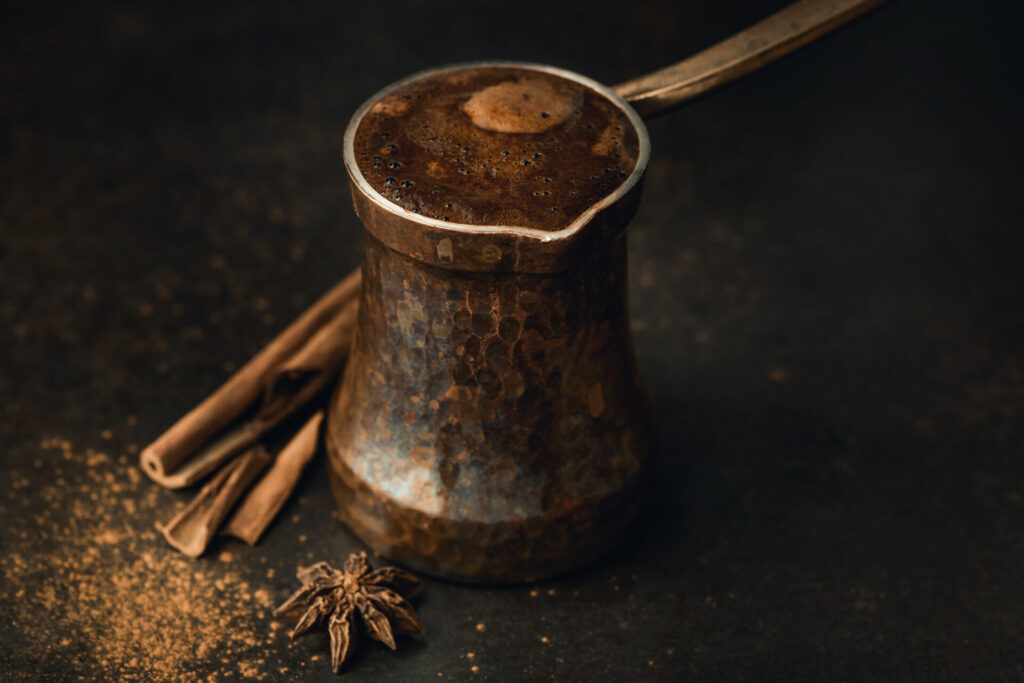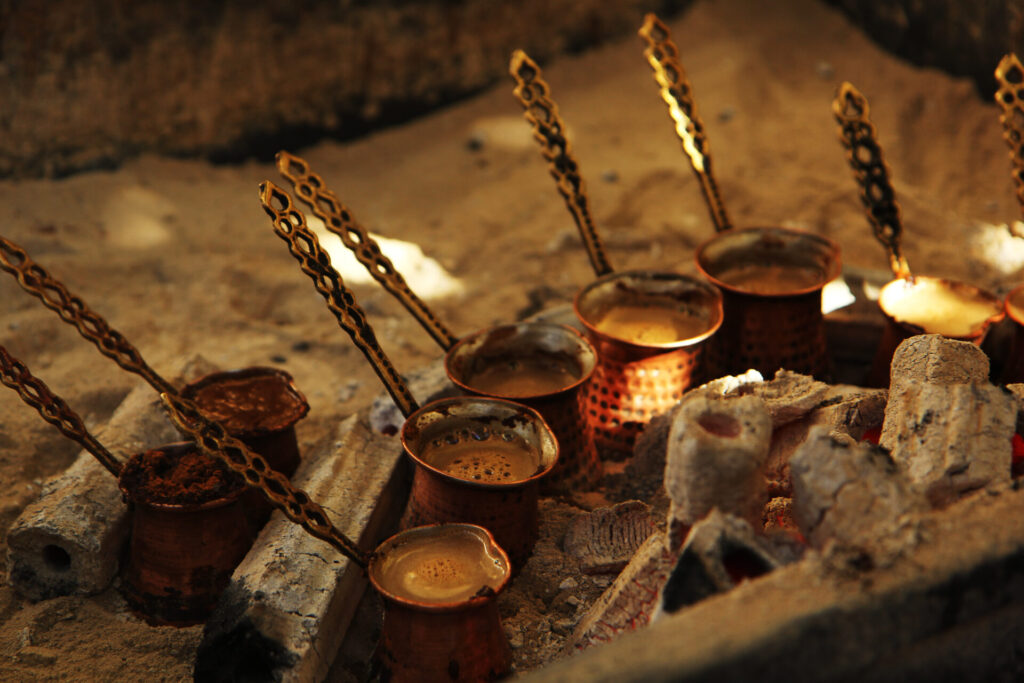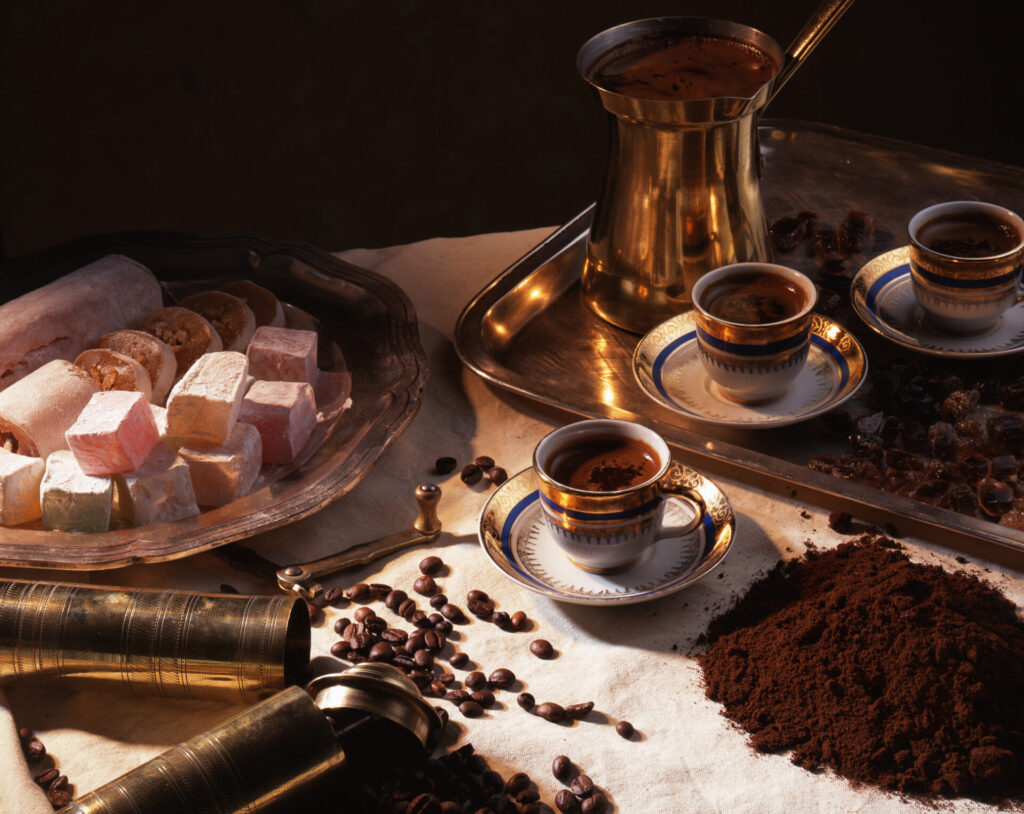Authentic, tasteful, characteristic… As one of the most delicious and strong coffee types, would you like to get to know Turkish coffee better? Having secured a place in UNESCO’s World Cultural Heritage List, Turkish coffee has a very rooted and deep history.
Turkish coffee is actually the specific method of brewing ground coffee beans and the way of serving it, which was invented by the Turkish. With its characteristic foam, sharp taste, and ritualistic presentation, Turkish coffee is a whole tradition by itself.
More Than A Drink: A Tale From The Arabian Peninsula
Originally, coffee was first consumed in the Arabian Peninsula by boiling and flavoring the coffee fruits and drinking the final product. It spread from the Arabian Peninsula to Turkish people in Ottoman, and to Europe from the Turkish. Developed by the Turkish people, the process of grinding coffee beans very finely and cooking them in boiling water in the special Turkish coffee pot called “cezve” is considered a specialized method for preparing Turkish coffee. Although this boiling is not done excessively, but just enough to integrate the coffee beans with water.
Arrival Of Coffee In The Ottoman Empire & The History of Turkish Coffee

The emergence of coffee in Turkish culture dates back to the 16th century. Özdemiroğlu Osman Pasha, Governor of Yemen decides to bring coffee to Istanbul because he loves the taste. Then, thanks to this brand new method of preparing and cooking the coffee beans, Turkish coffee takes its current form and recipe.
Then, following the opening of the first Turkish coffee house in 1554 in Istanbul as well as its rapid spread to other locations around the city enables the Turkish coffee to gain popularity outside of the palace and among the public. So, Turkish coffee takes its first steps out of the Ottoman palaces, and the people embrace this new taste in time. These coffee houses, where poems are read, literary discussions are held, and traditional board games are played besides coffee, start to become one of the most essential pieces of social life. Furthermore, this is the root of the association between Turkish coffee and long, sincere conversations.
In time, the merchants, wanderers, and even ambassadors find themselves fascinated by this extraordinary drink, which paves the way for coffee towards the European continent.
Cooked With Care In Palaces And In Houses

The tradition of cooking and presenting Turkish coffee with great care stars somewhere around these years in history. At these times, the raw coffee beans would be roasted on pans and beaten in a mortar until they are fine enough. After that, the roasted and ground coffee beans would be slowly and patiently cooked in copper or brass Turkish coffee pots on a coal fire.
Bonus: Flavor Analysis of Turkish Coffee
Turkish coffee is pretty rich in terms of aroma and different flavors. Light roast Turkish coffee has 50 different flavors and fragrance substances, while medium roast has 59, and dark roasted 65. Sweet, sour or fruity aromas are tasted and smelt in light roast Turkish coffee. The medium roast has a more spicy and woody flavor profile, whereas the dark roast Turkish coffee offers earthy and heavier spicy aromas. Even though electronic stoves or coffee machines have already replaced the ways of roasting and cooking coffee beans instead of the coal fire, if you want to learn how to cook authentic Turkish coffee along with the correct amount of coffee, water, and sugar, you can read our “An Authentic Method: How To Cook Classical Turkish Coffee? What Do You Need?” article.






